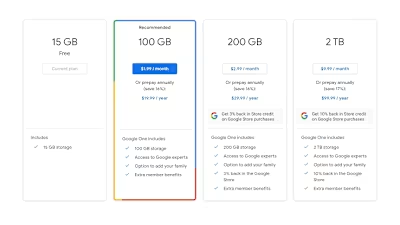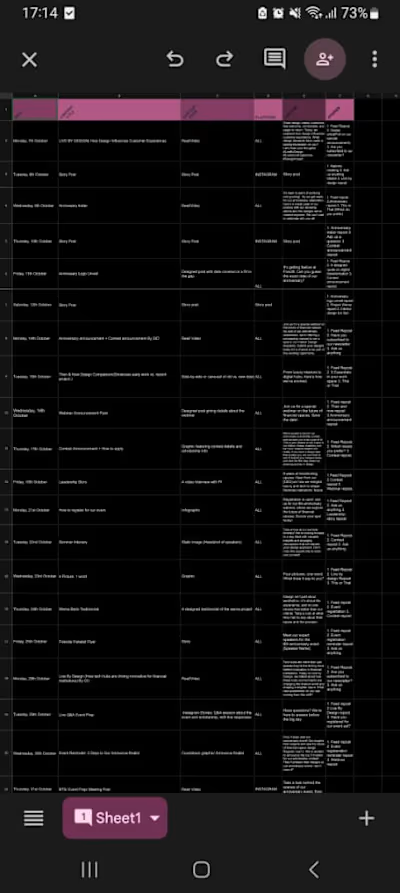Article: 2024 Content Writing Tools & Strategies for B2B Brands
The art of writing is slowly dying out.
Yes! Take a look around; many more people are joining the list of writers who only have a correlation to the craft in the form of a title.
Writers who no longer write because they have come to assume themselves to be in a war with AI.
A war they believe they cannot win but that is grossly untrue.
True is, the way we create content in 2024 has shifted- big time, but don’t worry, though; it’s not rocket science.
Walk with me…
Content creation can feel overwhelming sometimes. With so many tools, strategies, and buzzwords flying around, it’s easy to think, Where do I even start?
That’s exactly why I’m here. Let’s break it down together and make this whole process feel manageable- and dare I say- fun.
By the end of this, you’ll not only know the tools and strategies to create standout content but also feel confident using them. Ready? Let’s dive in!
Why Content Writng is Different (and Better) Now
Here’s the thing: content writing isn’t just dribbling a few paragraphs after hours of racking your brain and posting them anymore. Nope. It’s about telling stories, solving problems, and making people feel like, Wow, this is exactly what I needed today.
But here’s the catch: people’s attention spans are shorter than ever. If your content doesn’t grab them in the first few seconds, they’re scrolling past.
Think about your own habits. When you’re on Instagram, YouTube, or even Googling something, what keeps you hooked? Chances are, it’s either:
A headline or intro that feels tailor-made for you.
Content that’s visually appealing and easy to digest.
Something that offers value — whether it’s entertainment, information, or inspiration.
That’s what we’re aiming for. And lucky for us, there are tools and strategies to help you nail this every time.
Step 1: Brainstorming Ideas (Without Overthinking It)
Every great piece of content starts with a solid idea. But let’s be real: sometimes the hardest part is coming up with that idea in the first place.
Use AI Tools for Idea Sparking
I say this all the time: AI isn’t here to take your job- it’s here to make your life easier. Tools like ChatGPT are lifesavers when you’re stuck. Let’s say you want to write a blog post about sustainable fashion. You can ask ChatGPT things like:
“What are some interesting angles for a blog on finance?”
“Can you list 5 questions people often ask about seamless payment systems across countries?”
Boom. Instant inspiration. Now, instead of staring at a blank screen, you’ve got a direction.
Trendspotting with BuzzSumo
Want to know what’s hot in your industry? BuzzSumo is like your content crystal ball. You can search for keywords (e.g., “B2B Content Writing”) and see what’s already performing well. This not only gives you ideas but also shows you what kind of content people are loving right now.
Quick Tip: Take a trending idea and add your personal twist. That way, your content feels fresh and unique, even if it’s about a popular topic.
Step 2: Writing That Actually Connects
Here’s the golden rule of writing: Write like you’re talking to one person. (See how it feels as though I’m talking directly to you? yeah!) Imagine your ideal reader. Are they a busy entrepreneur? A college student? A new mom? Picture them and write directly to them.
Keep It Clear and Simple
I’ll be honest: nobody likes reading long, complicated sentences. Tools like the Hemingway App are your best friend here. They highlight overly wordy or complex sentences and help you simplify your writing.
For example:
Instead of: The integration of sustainability within consumer practices continues to evolve.
Try: People are finding new ways to shop sustainably.
Write First, Edit Later
This is a personal mantra. When you’re drafting, just get the words out. Don’t worry about typos, grammar, or whether it sounds perfect. That’s what editing is for. Every perfect piece of writing you’ve seen was once a very terribly written first draft.
Step 3: Making Your Content SEO-Friendly
Okay, let’s talk SEO. I know it sounds intimidating, but it’s really just about helping people find your content online. Think of SEO as breadcrumbs leading readers straight to your work.
SurferSEO: Your Keyword Coach
SurferSEO is like having a coach in your corner. It tells you exactly what keywords to use, how often to use them, and even suggests headings to include.
Let’s say you’re writing about “how to stay productive while working remotely.” SurferSEO might recommend including phrases like:
“Content writing tips”
“Best tools for freelance writing”
“Social media strategy templates”
Yoast for WordPress Writers
If you’re using WordPress, Yoast is a lifesaver. It gives you a green light when your post is SEO-ready, covering things like:
Keyword placement.
Readability scores.
Meta descriptions.
Pro Tip: Always write for people first, search engines second. If your content doesn’t make sense to a human reader, no amount of SEO will save it.
Step 4: Adding Visuals That Pop
Visuals aren’t just the cherry on top- they’re the sprinkles, the icing, and the cake itself. A strong visual can make your content 10x more engaging.
Canva: Design for Non-Designers
Not a graphic designer? No problem. Canva is ridiculously easy to use. You may not even need anyone’s help navigating it- it’s that easy to use. You can create:
Instagram graphics.
Blog headers.
Infographics to explain complex ideas.
Free Image Libraries: Pexels and Unsplash
Stock photos don’t have to be boring. Platforms like Pexels and Unsplash have high-quality, free images for just about any topic. Pro tip: pick images that feel authentic and match your brand vibe.
Step 5: Publishing and Sharing Like a Pro
Your content isn’t done when you hit publish. The next step is to get it in front of the right people.
CoSchedule for Social Media Planning
CoSchedule makes it super easy to schedule and share your posts across platforms. Plus, it shows you the best times to post for maximum engagement.
Google Analytics for Feedback
Want to know if your content is hitting the mark? Google Analytics is your go-to. It tells you:
How many people are reading your content.
How long they’re staying on your page.
Which topics they’re most interested in.
A Fresh Approach to Writing
Content writing in 2024 is all about working smarter, not harder. By combining your creativity with the right tools and strategies, you can create content that’s not only engaging but also effective.
Remember, the goal isn’t to churn out as much content as possible. It’s to create pieces that resonate, solve problems, and inspire action.
So, grab your laptop, try out some of these tools, and start creating. And hey -don’t be afraid to experiment. Innovation is shyly wrapped up in consistent experimentation.
That’s it for today!
What’s one content creation tool you’re excited to try? Share it with me in the comments!
Like this project
Posted Dec 17, 2024
Content writing is changing, and no... it's not because AI is replacing humans.
Likes
0
Views
3







